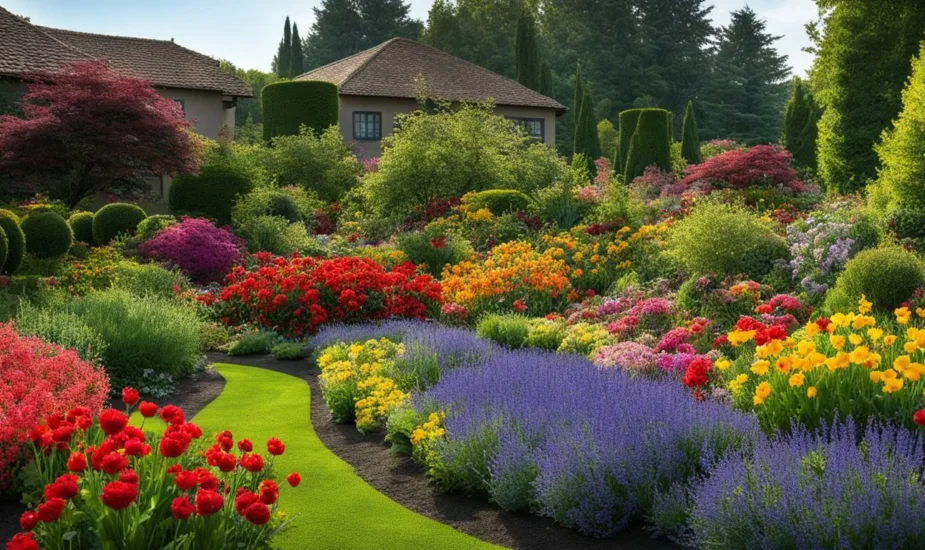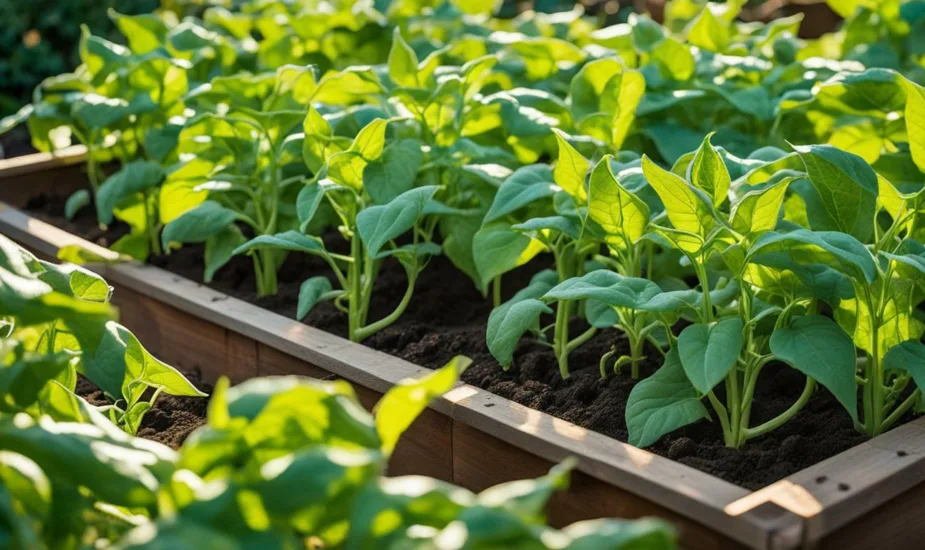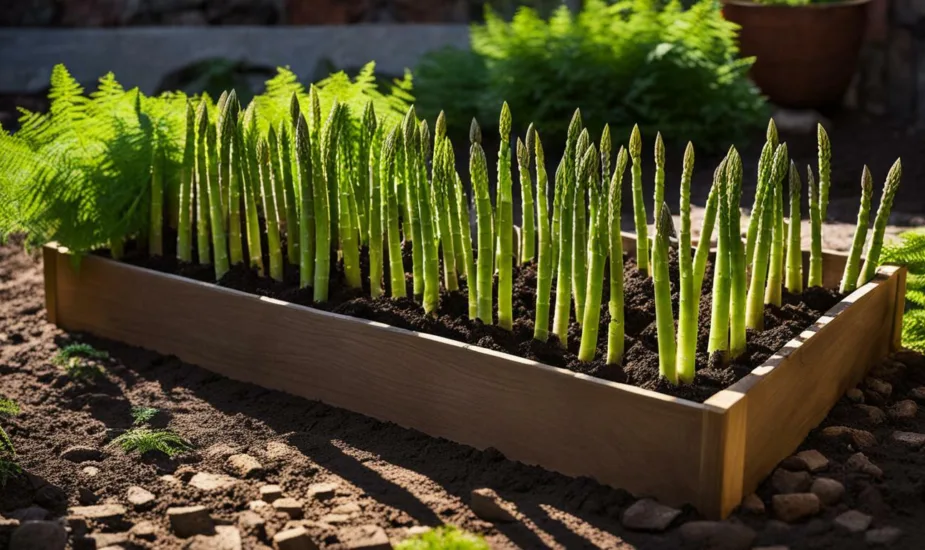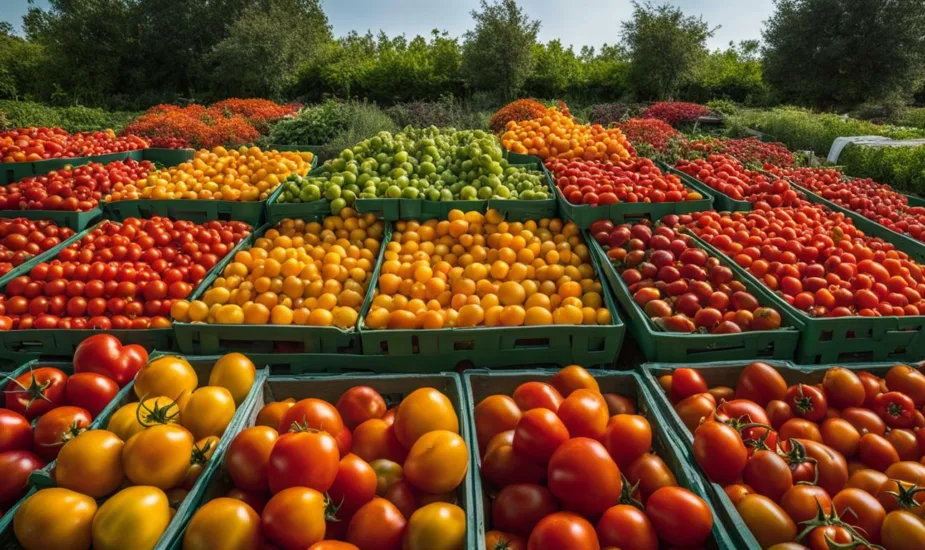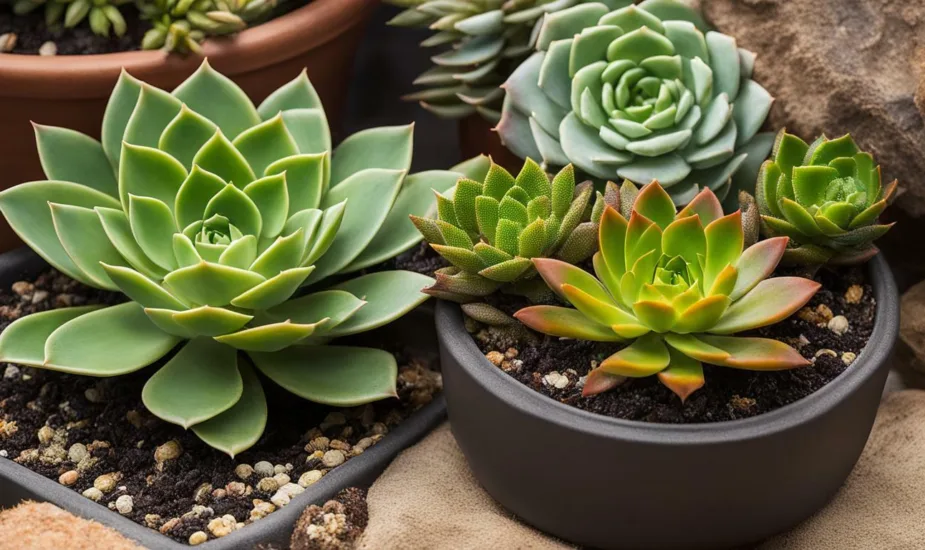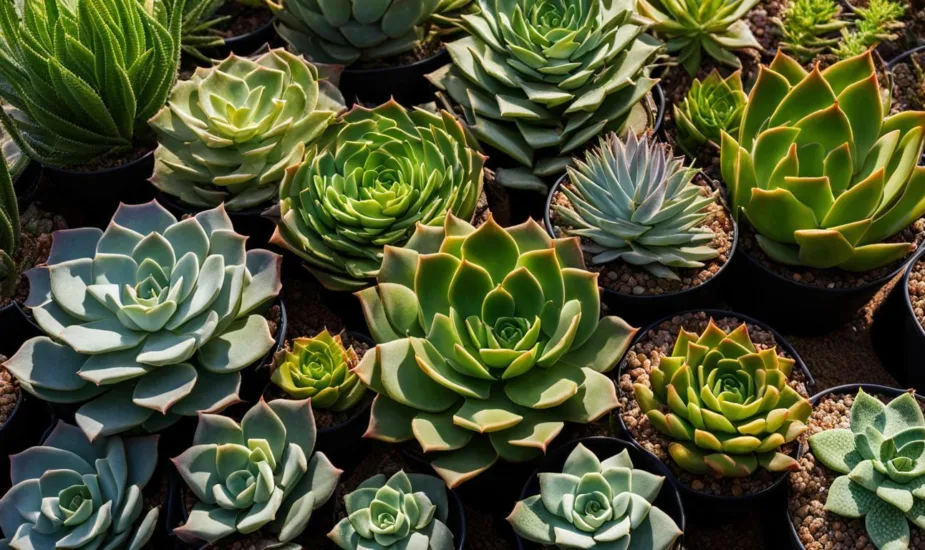Growing Cucumbers with Square Foot Gardening Method
Discover how to maximize your yield with square foot gardening cucumber techniques perfect for small spaces and urban gardens. Get growing tips here!

There’s something magical in watching a tiny seed blossom into a sprawling cucumber vine, especially when it’s nestled snugly in a square foot garden. Just this morning, with the sun’s first light stretching over my urban oasis, I held in my hands the fruits of labor—a crisp, Iznik cucumber. It was thinner-skinned, almost seedless, and harvested right from the small space that I’ve come to know and nurture.
As an advocate for maximizing yield in the compact soil of my city dwelling, I’ve turned to the square foot gardening method—a beacon of hope for urban gardens with limited room to grow. This method not only triumphs over spatial constraints, but it also spins a new tale of what gardening can be: efficient, prolific, and heartwarming.
Each cucumber, a testament to the rich tapestry of growing tips learned and relearned, has been a quiet partner in my journey. Just two square feet dedicated to vertical trellising have invited a quartet of cucumber plants skyward, promoting better air circulation and saving them from the damp ground’s embrace—ensuring a tidier and more plentiful harvest.
Key Takeaways
- Discover the joys of harvesting cucumbers earlier using the square foot gardening method.
- Learn how vertical trellising in small spaces enhances plant health and maximizes yield.
- Embrace square foot gardening to turn your urban garden into a cucumber haven.
- Utilize growing tips and variety switches to produce exceptional cucumbers in just 2 square feet.
- Experience the rewards of garden organization and space efficiency in urban environments.
Introduction to Square Foot Gardening
My introduction to square foot gardening revolutionized the way I approach cultivating my plot of land. This gardening method was developed by Mel Bartholomew in 1981 and has since been a game-changer for gardeners worldwide, particularly those of us contending with minimal yard space. Not only does it allow for a systematic approach to plant arrangement, but it also brings a new level of order and productivity to the growing experience.
By dividing my garden area into individual 1-square-foot sections, I’ve been able to create a dense and highly structured space that significantly amplifies my harvest potential. With organic square foot gardening, every square inch is utilized, leading to a higher yield and a profound reduction in unnecessary weeding and maintenance — a welcomed shift from the physically demanding traditional row gardening.
The beauty of square foot gardening lies in its simplicity and efficiency. Whether you’re dealing with herbs, flowers, or vegetables, seeing your garden as a mosaic of bountiful squares rather than overwhelming rows encourages creativity and deepens the connection between the gardener and the earth. Here’s how to get started:
- Create a layout plan with sections made up of individual square feet.
- Choose plants that thrive in close quarters and can be vertically trained if needed.
- Enrich the soil with organic compost to promote healthy growth and resilience against pests.
Let’s dive into some specifics with a comparative look at square foot vs. traditional gardening:
| Aspect | Square Foot Gardening | Traditional Gardening |
|---|---|---|
| Space Efficiency | High | Low |
| Maintenance | Minimal | Extensive |
| Water Usage | Conservative | Often excessive |
| Yield | Maximized | Varies |
| Accessibility | Easy | Challenging |
Gardeners like me who yearn for efficiency without sacrificing the lushness of their landscape will find square foot gardening to be a perfect fit. Its methodical nature turns even the tiniest patches of earth into a cornucopia of freshly grown delights, ensuring that no matter the size of your outdoor space, a flourishing garden is within reach.
Designing Your Square Foot Garden for Cucumbers

Embracing the square foot gardening method has revolutionized my approach to cultivating raised bed cucumber plants. As a gardener, there’s an undeniable joy in strategically plotting a garden grid and seeing cucumbers flourish in each allocated square. Let me guide you through creating an optimal environment for these climbing veggies, ensuring a bounty fit for the greenest of thumbs.
Planning Your Square Foot Grid
My go-to configuration for a square foot garden has always been a sturdy 4×4 foot grid. It offers a balance between space-efficiency and productivity, a principle I’ve learned from seasoned gardening resources. But the true game-changer is utilizing a plant spacing guide that accommodates cucumber’s growth habit, ensuring each verdant vine has its rightful place in the sun.
Choosing the Ideal Location
Securing the prime real estate for your cucumber plants isn’t just about aesthetics; it’s about providing the conditions for the plants to thrive. A spot soaked in at least 8 hours of sun, coupled with good air circulation, is non-negotiable. Accessibility is equally important – not just for the sake of convenience but for the regular care and affection these plants demand.
Materials and Tools Needed
My toolkit for this endeavor is both methodical and innovative. A Gardening Grid™ watering system stands at the core of this setup, ensuring even irrigation across the patch. Additionally, a sturdy trellis is not just a support structure; it’s a vertical gateway for cucumbers to climb towards health and productivity. Here’s a breakdown of what I recommend for a full-fledged square-foot garden:
| Material/Tool | Function | Importance |
|---|---|---|
| Gardening Grid™ Watering System | Provides even and consistent irrigation | Essential for healthy growth and water management |
| Trellis or Vertical Support | Supports the vertical growth of cucumber plants | Improves air circulation and facilitates harvesting |
| High-Quality Soil Mix | Nutrient-rich foundation for plant roots | Increases the yield and health of cucumbers |
| Mulch | Helps retain soil moisture and prevents weed growth | Protects plants and reduces maintenance efforts |
The gratification of watching cucumber plants stand tall, with their tendrils winding gracefully around trellises, is a sight to behold. And it’s not just the visual appeal; it’s a testament to the wonders of an efficient square foot garden setup, teeming with life and the promise of a hearty harvest.
Preparing the Perfect Soil Mix for Square Foot Gardening Cucumber

As someone deeply passionate about maximizing the potential of my square foot garden, honing in on the best soil mix for square foot gardening cucumbers has been a game-changer. My pursuit of the ultimate mixture involved experimenting with various combinations of organic materials to support the cucumber plants from seed to harvest.
The sweet spot for this mix is a harmonious blend that combines equal parts of peat moss, vermiculite, and compost. Peat moss contributes to the mixture’s ability to hold moisture, vermiculite ensures that the mixture remains light-weighted and aids in aerating the soil, while compost provides an abundance of essential nutrients. This three-component combination not only promotes robust cucumber growth but also simplifies maintenance due to its superior structure and drainage capabilities.
To demonstrate the merits of each component in this ideal soil formula, let’s consider the following table that showcases the role and benefits of each ingredient:
| Material | Role in Mix | Benefit to Cucumbers |
|---|---|---|
| Peat Moss | Moisture Retention | Ensures consistent water availability |
| Vermiculite | Soil Aeration | Facilitates root growth and health |
| Compost | Nutrient Supply | Enriches soil with organic matter |
Tending to my square foot garden, I make it a practice to regularly turn the soil to a depth of 8 to 12 inches. This simple yet effective method keeps the soil loose and fosters an environment where cucumber roots can thrive, ensuring they have unrestrained access to water and nutrients—which is, after all, the cornerstone of a flourishing cucumber harvest in a square foot garden setup.
Planting Cucumbers in Your Square Foot Garden

Understanding the ins and outs of growing cucumbers in small spaces is pivotal for any vegetable enthusiast or gardener seeking to maximize their harvest in minimal areas. With the square foot gardening technique, I’ve learned firsthand the significance of optimal plant spacing and choosing successful cucumber varieties to adapt to this compact and efficient approach.
Spacing and Depth for Cucumber Plants
To ensure your cucumbers thrive, allot two plants per square foot at a depth of half an inch to an inch—this way, they can maximize the nutrients they get from the soil. When I plant my cucumber seeds, I make sure to leave about 6 inches apart within the square, which is the optimal plant spacing for proper growth and yields in my square foot garden.
Best Cucumber Varieties for Square Foot Gardening
My go-to tip for fellow gardeners is to choose varieties that are known for their resilience and high production rates. After trial and error, I’ve found that varieties like ‘Bush Champion,’ ‘Salad Bush,’ and ‘Spacemaster’ are particularly successful cucumber varieties for the square foot gardening layout due to their compact growth habit and impressive disease resistance.
Companion Planting with Cucumbers
An extra perk of a well-planned square foot garden is the ease of companion planting. Marigolds, radishes, and nasturtiums are excellent plant buddies for cucumbers as they deter pests naturally. Here’s a visual guide to help you design your garden:
| Companion Plant | Benefits | Spacing from Cucumbers |
|---|---|---|
| Marigolds | Repels nematodes and other pests | 1 per square foot |
| Radishes | Acts as a trap crop for cucumber beetles | 16 per square foot |
| Nasturtiums | Provides a habitat for predatory insects | 1 per square foot edge |
Embedding these planting principles into your gardening practice can significantly capitalize on the available space, leading to a lush and prolific cucumber crop. Always keep in mind that bountiful yield is predominantly attributed to strategic planning and persistent care.
Organic Square Foot Gardening: Caring for Your Cucumber Plants

My journey in organic square foot gardening has brought a wealth of satisfaction, not only in the beauty of well-ordered garden beds but also in the robust taste of home-grown, organic produce. When it comes to cultivating cucumbers, their success hinges on consistent attention and care, especially in maintaining well-drained soil. Let me share some indispensable tips for successful square foot gardening with cucumbers.
Firstly, hydration is the lifeline of your cucumber plants. They thrive when they receive approximately 1-2 inches of water weekly. This consistent watering schedule ensures they can soak their roots and is best done during the cooler parts of the day to minimize evaporation. Organic square foot gardening also means feeding your plants naturally; hence I opt for water-soluble plant food pertinent for vegetables, to bolster their nutrient intake without chemical intervention.
To combat the dry spells and keep the moisture level constant, mulching is my go-to strategy. I use organic compost or straw, which additionally helps suppress weed growth and bolsters soil nutrients as they decompose. This not only maintains an optimal moisture level but also eventually enriches the soil, encouraging the growth of beneficial microorganisms.
Even with impeccable care, cucumbers can fall prey to diseases like anthracnose or powdery mildew. Prevention, in organic gardening, is far better than cure. Thus, I practice careful hygiene routines such as rotating crops, removing diseased leaves immediately, and avoiding overhead watering to inhibit the spread of diseases. Here is a table summarizing the care schedule for my cucumber plants:
| Week | Watering | Feeding | Mulching | Disease Monitoring |
|---|---|---|---|---|
| 1-2 | 1 inch | At planting | Apply organic compost | Check for leaf spots |
| 3-4 | 1.5 inches | Two weeks post-planting | Check moisture retention, add more if needed | Inspect for mildew, especially in humid weather |
| 5-6 | 2 inches | Monthly | Top-up with straw to retain moisture through heat | Remove any diseased leaves, avoid water splash |
Remember, my fellow gardeners, the bounty of your harvest is proportionate to the love and care you invest in your garden. Square foot gardening with cucumbers not only yields a satisfying crunch of freshness but also imparts the tranquil pleasure of nurturing life. May your cucumber vines grow lush, and may your table always feature the vibrant taste of organic produce.
Vertical Gardening Techniques for Cucumbers
As a dedicated gardener, I’ve always been fascinated by the concept of growing upwards rather than outwards. That’s why vertical gardening techniques for cucumbers have transformed my approach to cultivating these green, crunchy delights. By incorporating trellis support systems, not only do I maximize my garden’s productivity, but I also achieve high yields that seemed unattainable in the confined spaces of my urban garden.
Setting Up Support Structures
I’ve learned that sturdy trellises form the backbone of vertical gardening. For cucumbers, in particular, a trellis must offer reliable support and accommodate the vigorous growth of the vines. Mesh or wire models are excellent because they provide ample grip for the tendrils, enabling the plants to climb naturally. I recommend setting up the trellis at planting time so as not to disrupt the young plants later.
Maximizing Yield in Small Spaces
One might think limited space equals limited produce, but vertical gardening turns this assumption on its head. By guiding cucumber vines up a trellis, I effectively increase the growing area and let each plant receive more sunlight and air circulation. My experience has been that this leads to a healthier crop and a more abundant harvest than if the plants were left to sprawl across the ground.
Benefits of Vertical Growth
Aside from the aesthetic appeal of a lush, green wall in my garden, the benefits of training cucumbers to grow vertically are plenty. It reduces the likelihood of soil-borne diseases, keeps the fruit clean, and simplifies the harvesting process—no more stooping to pick cucumbers. Overall, vertical growth has made a significant positive impact on both the health of my cucumbers and my back!
Conclusion
My journey with square foot gardening has elevated my success in cultivating cucumbers. This method’s beauty lies in its simplicity and efficiency, empowering me to maximize square foot gardening cucumber yield while being kind to my back and my schedule. The layout’s ingenuity has allowed me to turn even the smallest urban spaces into a flourishing garden spot, brimming with vibrant green vines and crisp, fresh cucumbers.
Sustaining garden productivity has been a delightful challenge. I’ve found that by selecting the right cucumber varieties, placing them at optimal distances, and fostering them with organic soil practices, my garden is not just surviving; it’s thriving. What’s more, incorporating vertical gardening into my square foot setup has been a game-changer. It’s not only a wise use of space, but it has also significantly improved air circulation and reduced pest issues, ensuring cucumbers that are as healthy as they are delicious.
With a bit of planning and a passion for greenery, elevated gardening success is within anyone’s reach using the square foot gardening method. And, as I stand proudly among the trellised vines, plucking the fruits of my labor, I am reminded that the greatest harvest is not only in the cucumbers themselves but in the joy and satisfaction that this intimate connection with nature brings to my life.
FAQ
How much space do I need for square foot gardening cucumbers?
Cucumbers can grow effectively in square foot gardens with just 2 square feet per plant if you’re using vertical space and trellising techniques.
Why is square foot gardening better for growing cucumbers in small spaces?
Square foot gardening maximizes yield by dividing the growing area into structured 1-square-foot sections, allowing for a denser, more organized use of space, making it ideal for small or urban gardens.
What is the best soil mix for square foot gardening cucumbers?
The best soil mix for square foot gardening cucumbers typically includes one-third peat moss, one-third vermiculite, and one-third compost for a well-draining, nutrient-rich environment.
How often should I water my cucumber plants in a square foot garden?
Provide cucumber plants with 1-2 inches of water per week, maintaining consistent moisture to encourage healthy growth and productivity.
Can I use organic methods in square foot gardening for cucumbers?
Absolutely! Implementing organic methods, such as using organic soil amendments, organic mulches, and avoiding synthetic chemicals, will contribute to a healthy and productive square foot garden.
What are some companion plants for cucumbers in a square foot garden?
In a square foot garden, good companion plants for cucumbers include radishes, peas, beans, and marigolds, which can help deter pests and enhance growth.
How do I set up a trellis for vertical gardening in my square foot garden?
Install a trellis at the north end of your square foot garden so it doesn’t shade other plants. Secure it firmly in the ground or to the frame of your raised bed to ensure it can support the weight of growing cucumber vines.
What are the benefits of vertical gardening techniques for cucumbers?
Vertical gardening promotes better air circulation, reduces disease, and makes harvesting easier. It also allows gardeners to grow more cucumbers in a smaller footprint by taking advantage of vertical space.
 Little Garden Tips
Little Garden Tips




